Back to top: Lithics from Unit A16
Overview
Lithic artifact is the most represented object class with a total of about 320 items second only to clay artifacts (435). Many of them are just small stone debitage with working traces but highly fragmentary and not useful for a typology or lithic specimens without any working trace. The most interesting stone objects are chipped stones (as blade and other kind of tools), ground stone made of basalt (grinding stones, mortars, pestles), other functionally uncertain tools, door socket, weight and some very specific tools such as the case of a basalt axe.
Back to top: Lithics from Unit A16
Chipped stones
This category includes all the flint and obsidian small tools. The most attested is the blade, a long and thin tool usually with two retouched cutting edges, made either in flint (q203.6, q283.2, q734.1) or in obsidian (q258.1, q773.3, q799.1, q876.3). Very beautiful for its manufacture is an ogival blade with a extremely precise retouch covering not just the sharp edges, but all the surfaces (i171). Another beautiful tool (i132) has a teardrop shape, is evenly and very regularly retouched, with a very thin cutting edge. A large number of chipped stones are defined “debitage” because they show traces of retouch but are not referable to any specific tool since just small fragments(q27.50, q685.2, q771.99, q777.1, q850.2, q861.1).
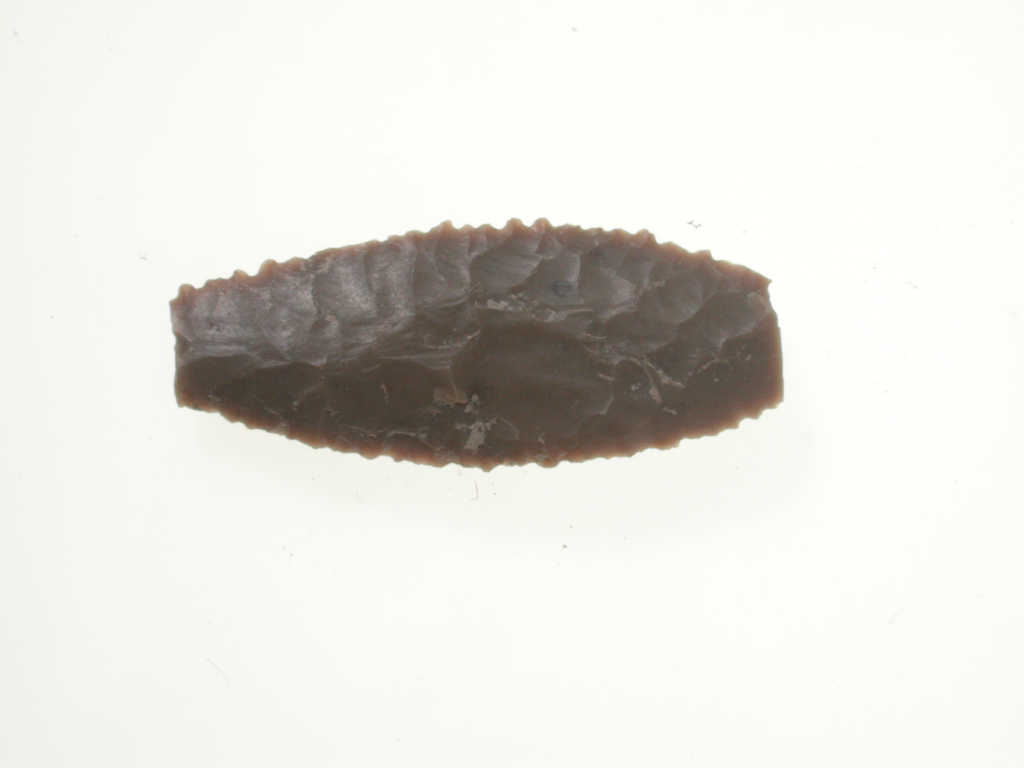 i171 |
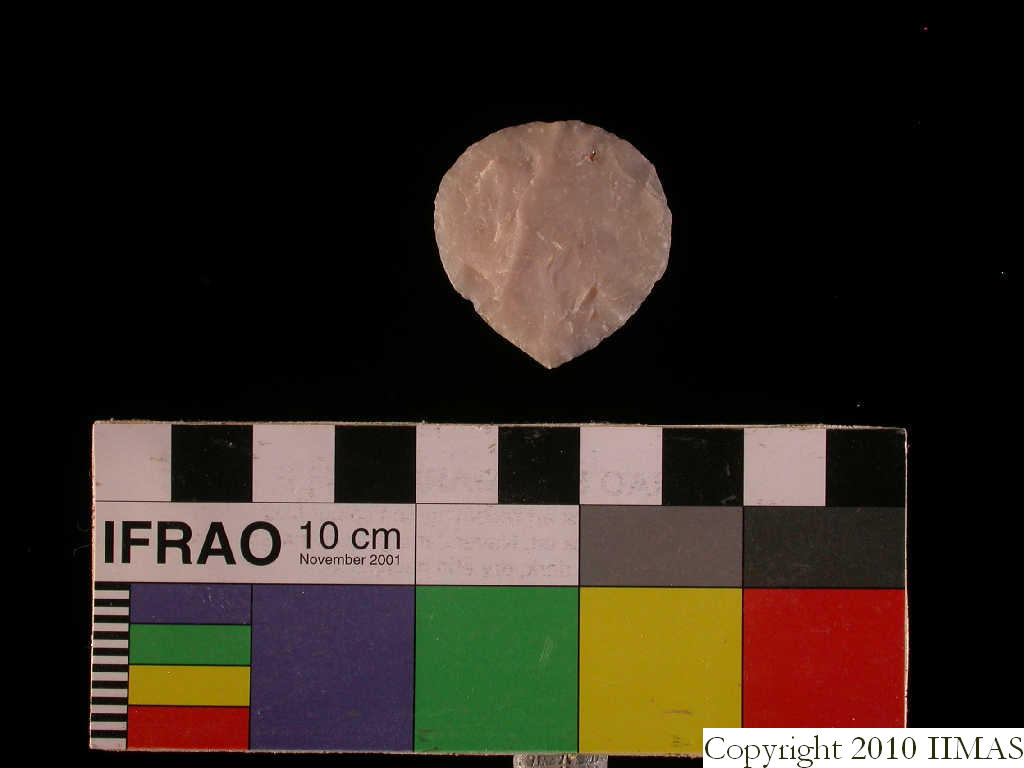 i132 |
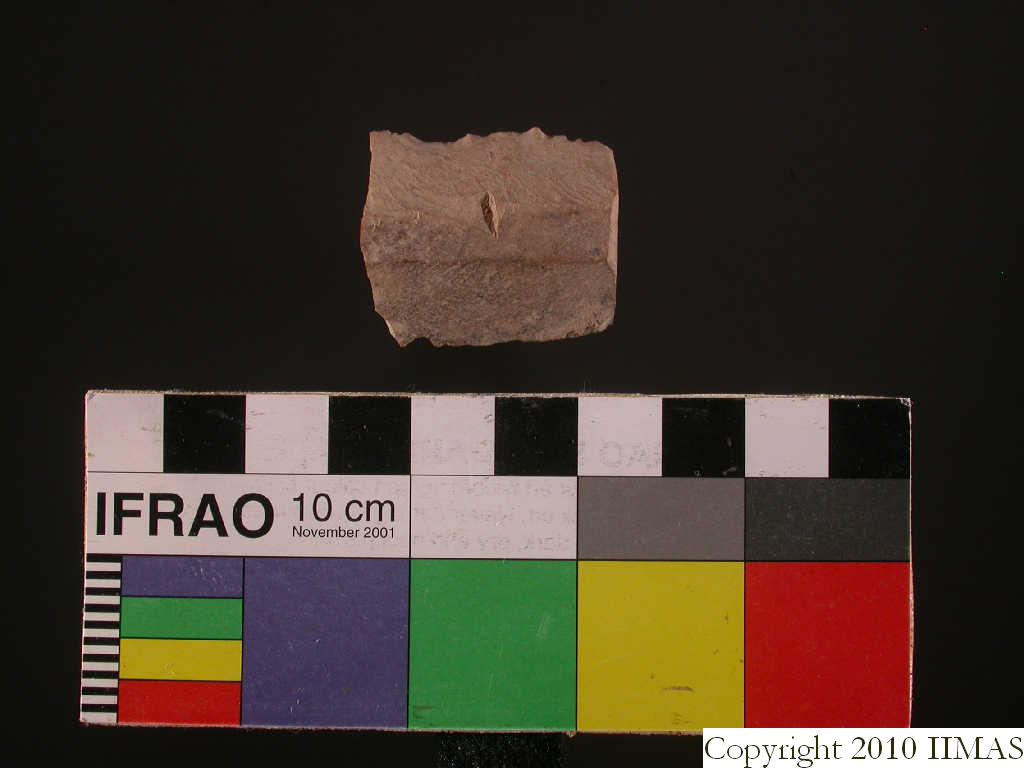 q203.6 |
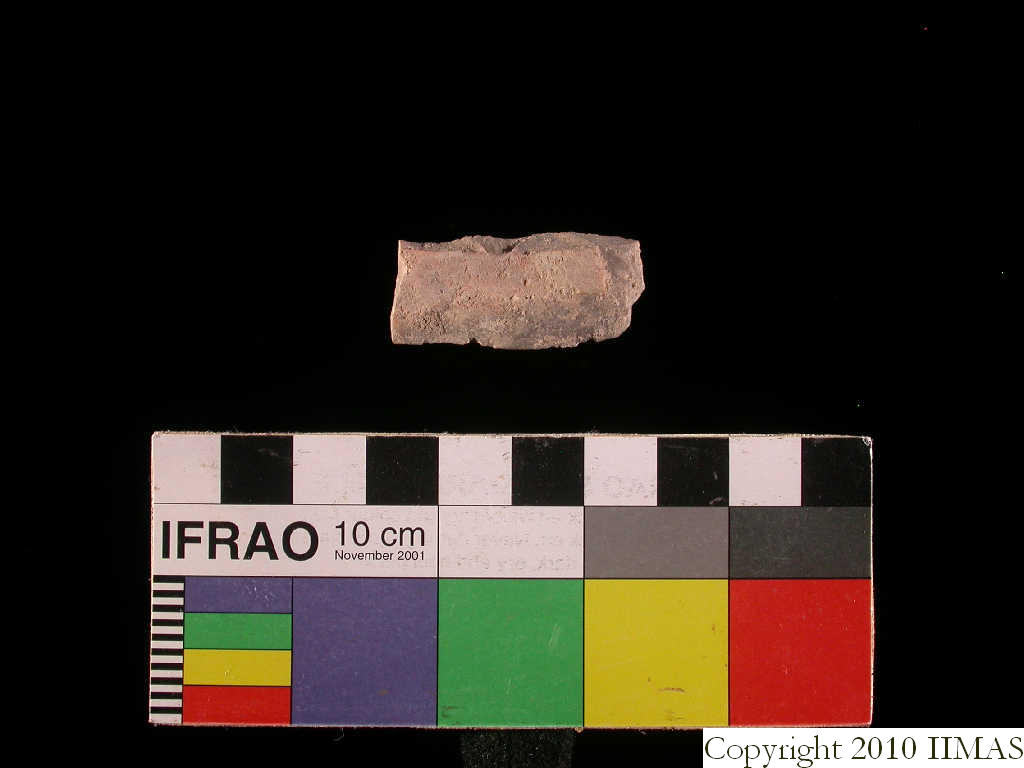 q734.1 |
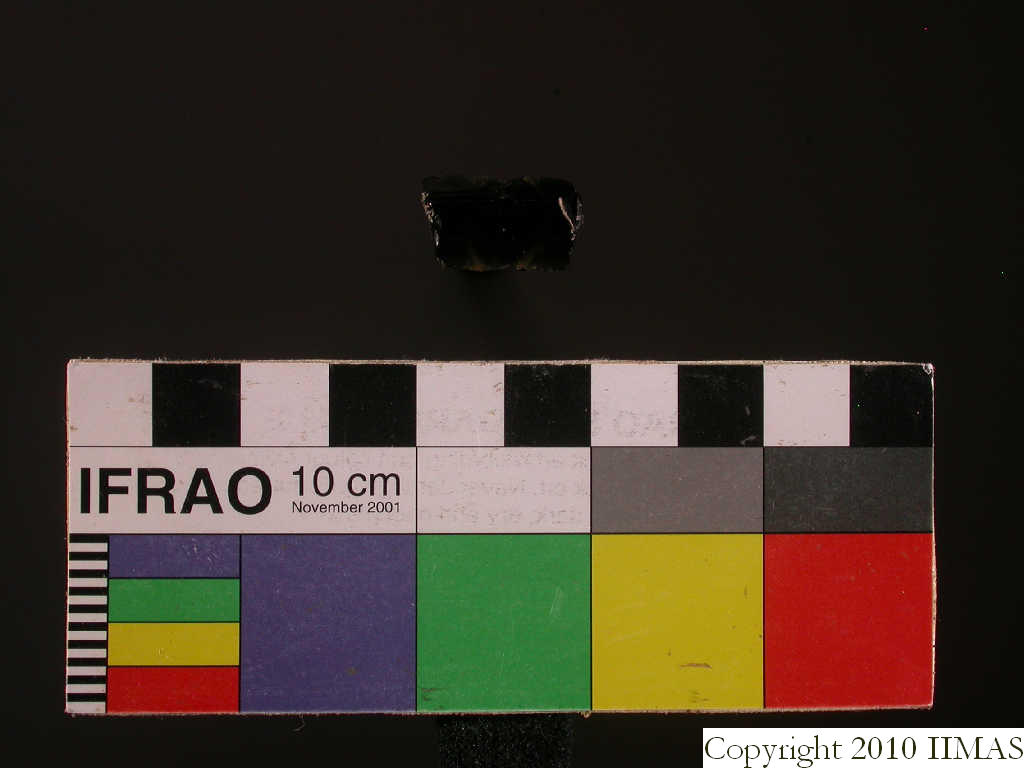 q799.1 |
 q876.3 |
Back to top: Lithics from Unit A16
Ground stones
About 50 grinding stone fragments were found in A16. They are usually made of porous basalt and show similar traits, a convex side and a flat side (i162, q24.1, q134.1, q871.6) that sometimes could also be concave (q728.3). To this category belong also mortars (q194.1, q331.1, q730.1) and pestles (q184.1), found in a smaller number. The pestle could be in the normal rounded shape or as this example possibly shows, (q324.1) with cubic shape.
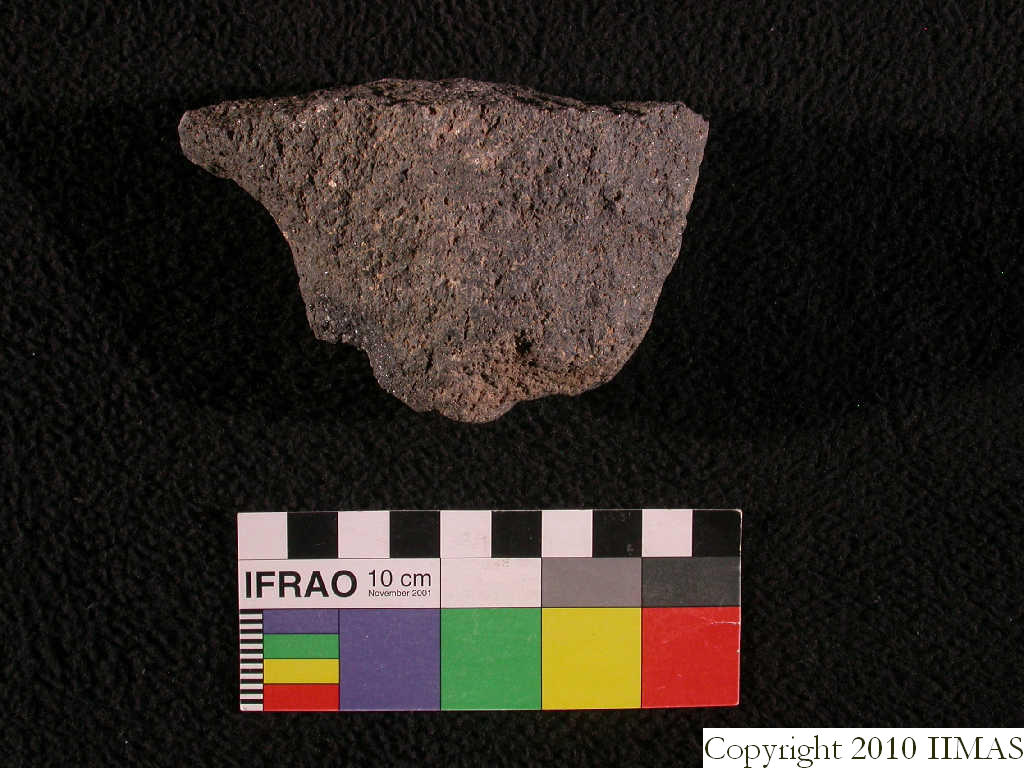 q871.6 |
 q730.1 |
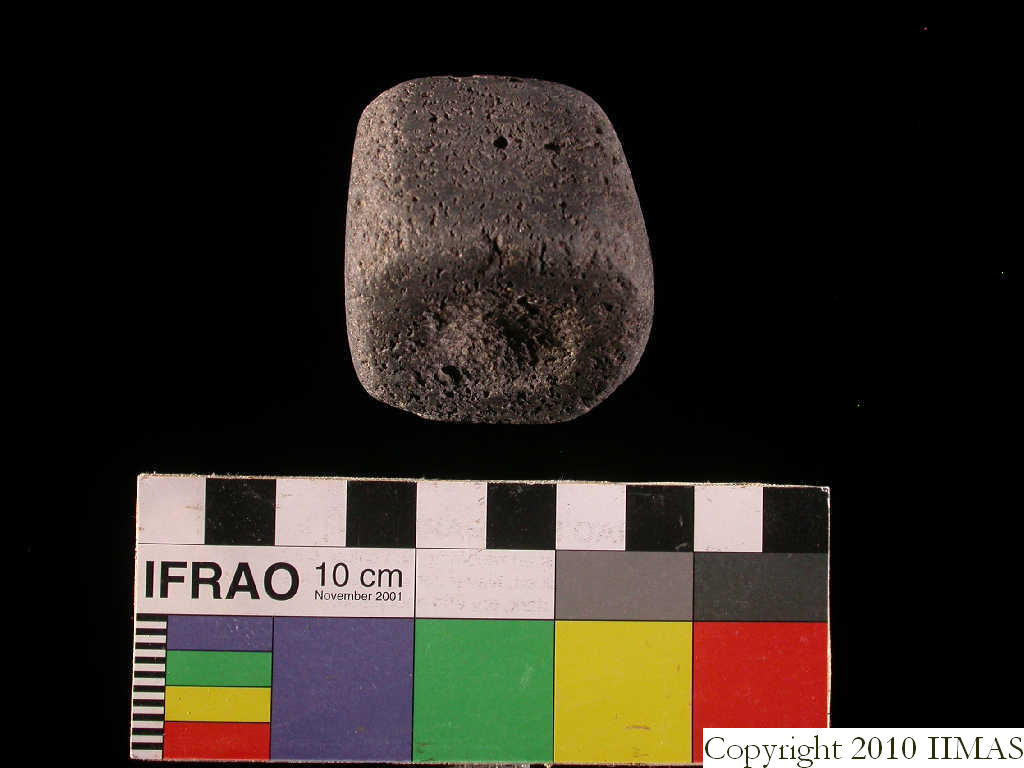 q324.1 |
Back to top: Lithics from Unit A16
Other lithic artifacts
The majority of other lithic artifacts are represented by three main kinds of object: door sockets, stone weights, and other tools with different functions. The door sockets have a more or less deep hollow and sometimes show strong use traces (q200.1, q371.1, q539.2). Many stones have a hole passing through in the middle and they are interpreted as weights, possibly even loom weights (q233.1, q462.1, q84.2, q77.1). There is a category of stone objects generically defined as tool, with possible different functions: crushing (q691.2), sharpening (q698.1), hammering (q86.2), grinding (q312.2) and other with uncertain function (q452.1, q85.2, q86.2). A beautiful tool is constituted by a basalt axe (q279.1 and q368.1) with a very smooth surface and a shaft hole.
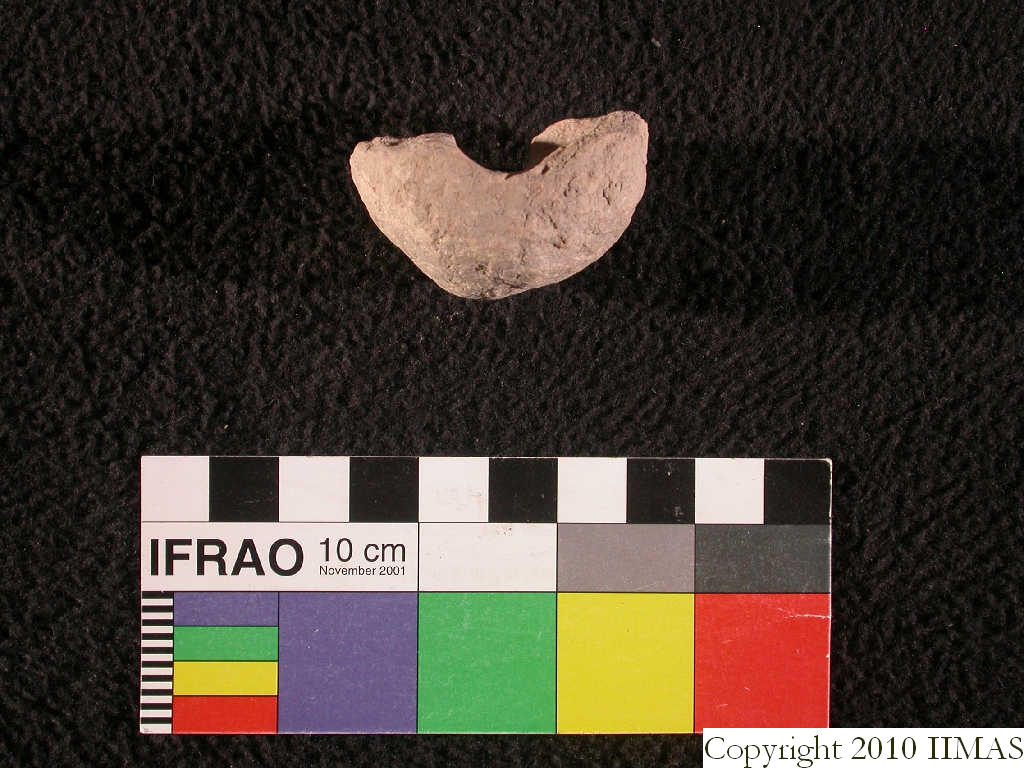 q233.1 |
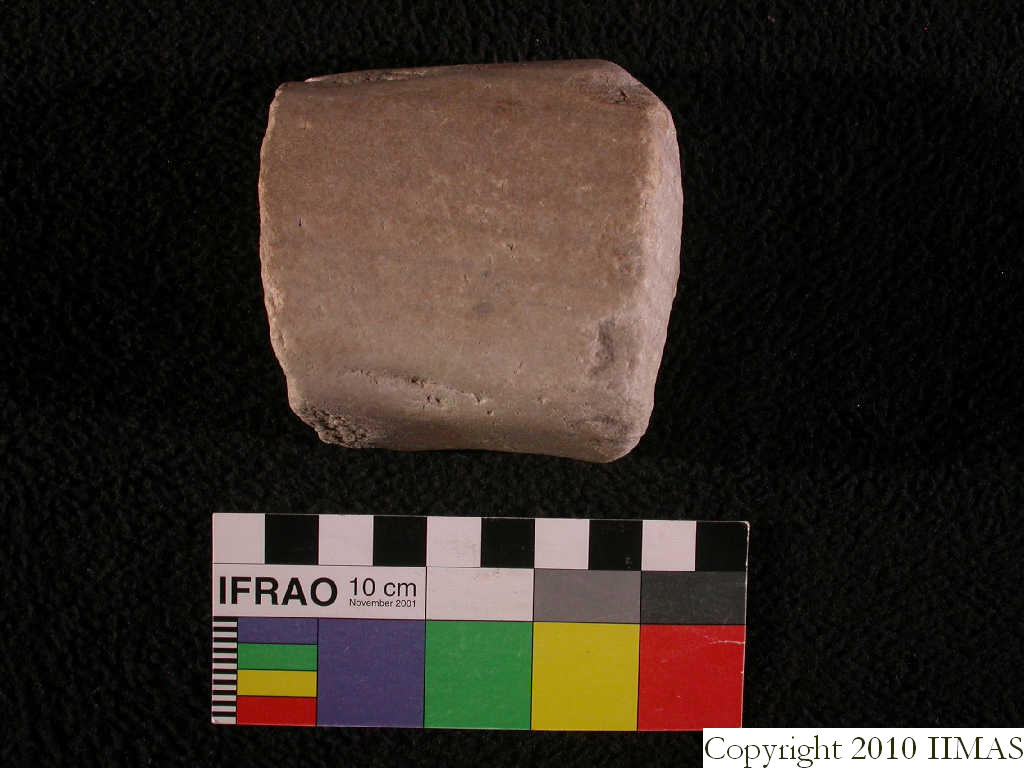 q698.1 |
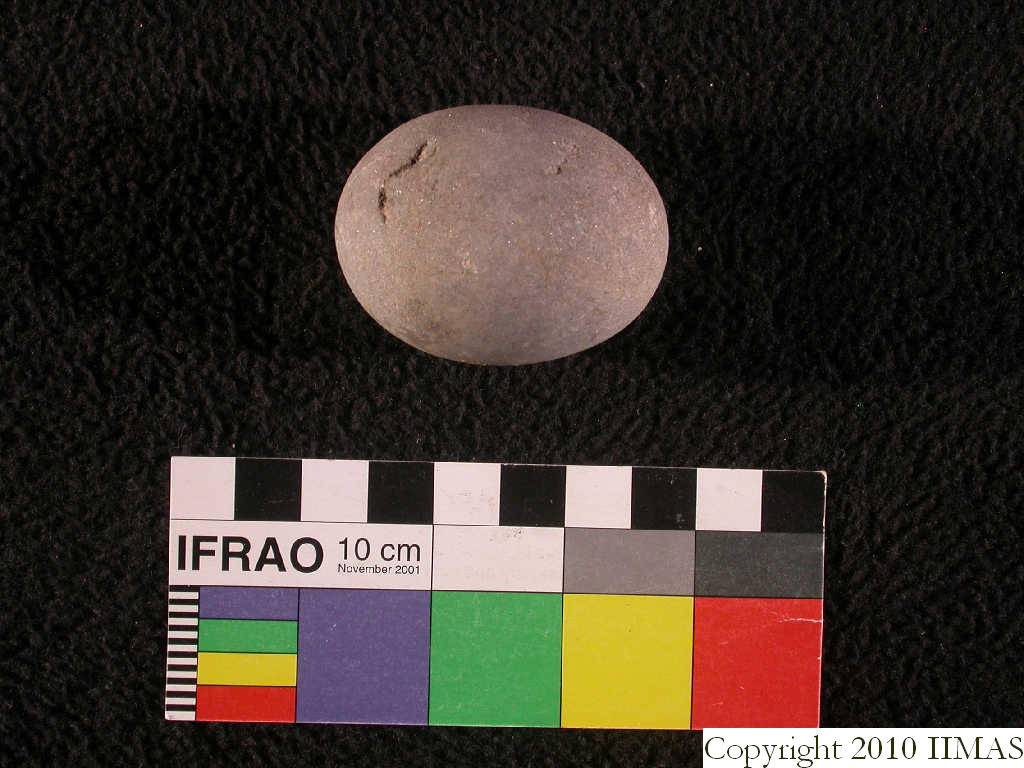 q312.2 |
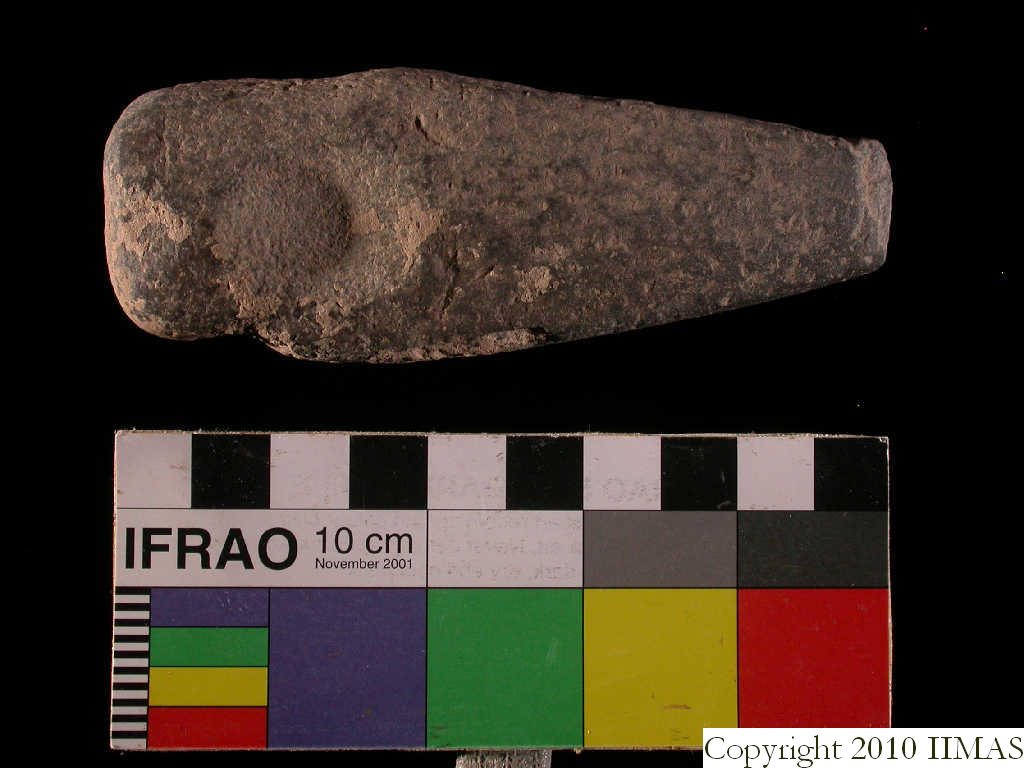 q452.1 |
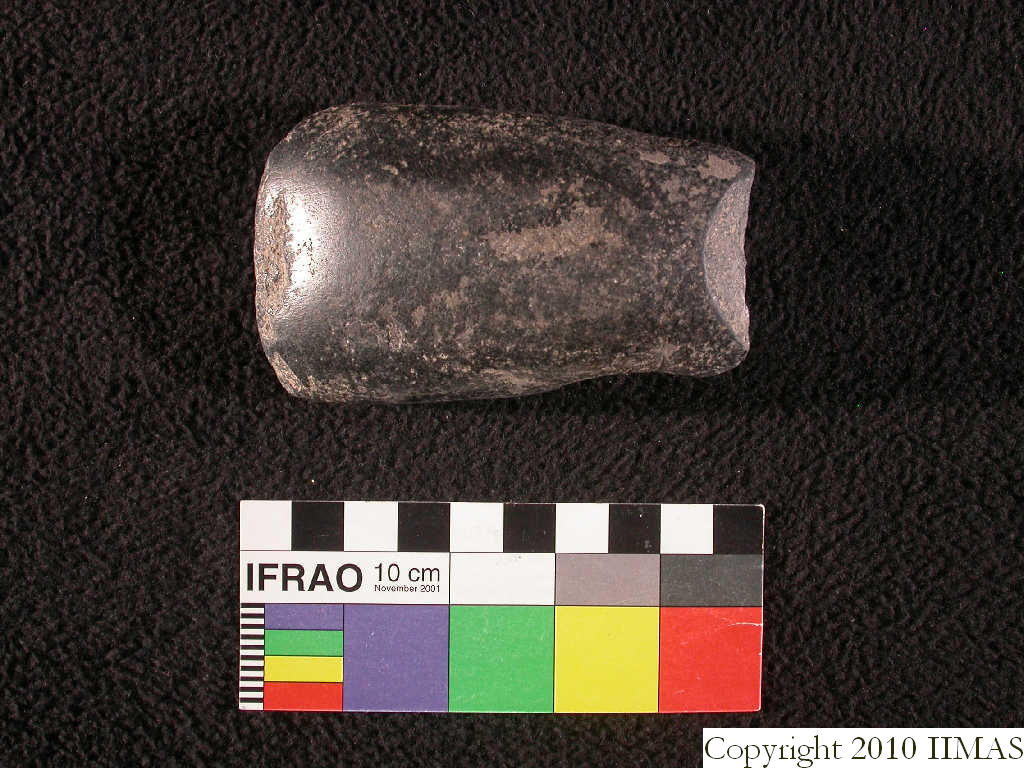 q279.1 |
Back to top: Lithics from Unit A16